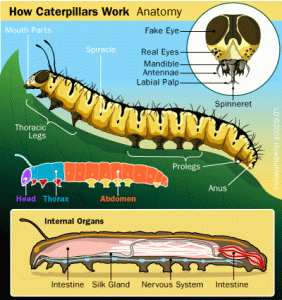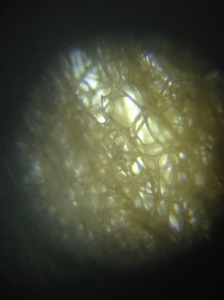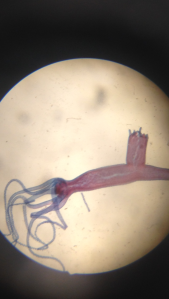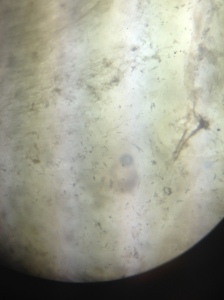
In our next class we will be dissecting an earthworm. Even though you may think the earthworm is similar to a caterpillar, they are not. Review the anatomy of a caterpillar and then the Earthworm. See if you can identify the differences.
Review the dissection procedure for Experiment 11.3 Earthworm Dissection on pages 347 – 350 so that you are prepared for this lab.

If you have a lab dissection tray and/or tools, bring them with you to class. Mr. Wilson will have dissecting supplies available for those who do not have them.
Everyone should have an earthworm to dissect.
February 6, 2014 PowerPoint Honors Biology Mod 11 Invertebrates
In our last class we examined the three types of body symmetry for Kingdom Animalia. They are spherical, radial and bilateral. In kingdom animalia we began studying Phylum Porifera (sponges) and their unique anatomy. We continued our study of the Phylum Cnidaria (hydra, sea anemone, corals and jellyfish). We performed three experiments using microscopes and examined the Spicules of a Sponge, Hydra and a jellyfish.



Photos by Rachael
Homework:
- Read Module 11 pages 343 – 356;
-
Answer OYO questions 11.1 – 11.8;
-
Answer Study Guide questions a-q and questions 2-12;
- Finish lab book labs from class;
-
Class challenge: Longest Broad Jump;
- Quiz: Three types of Body Symmetry and Life cycle of a jellyfish (see handout as well as Figure 11.6 on page 341).
Have a good week! -Mrs. S